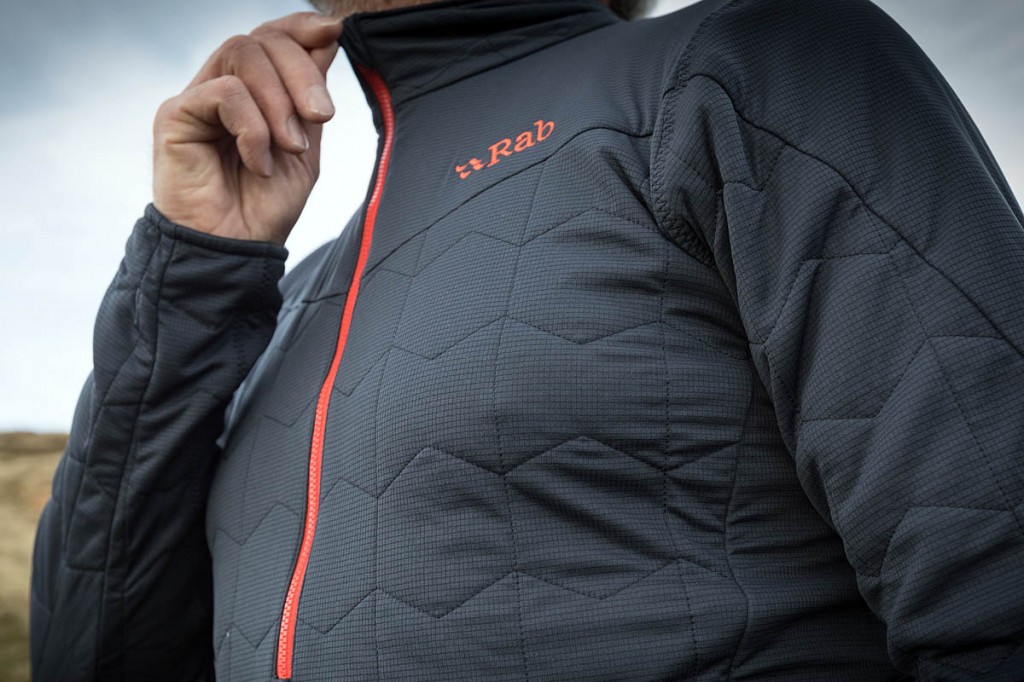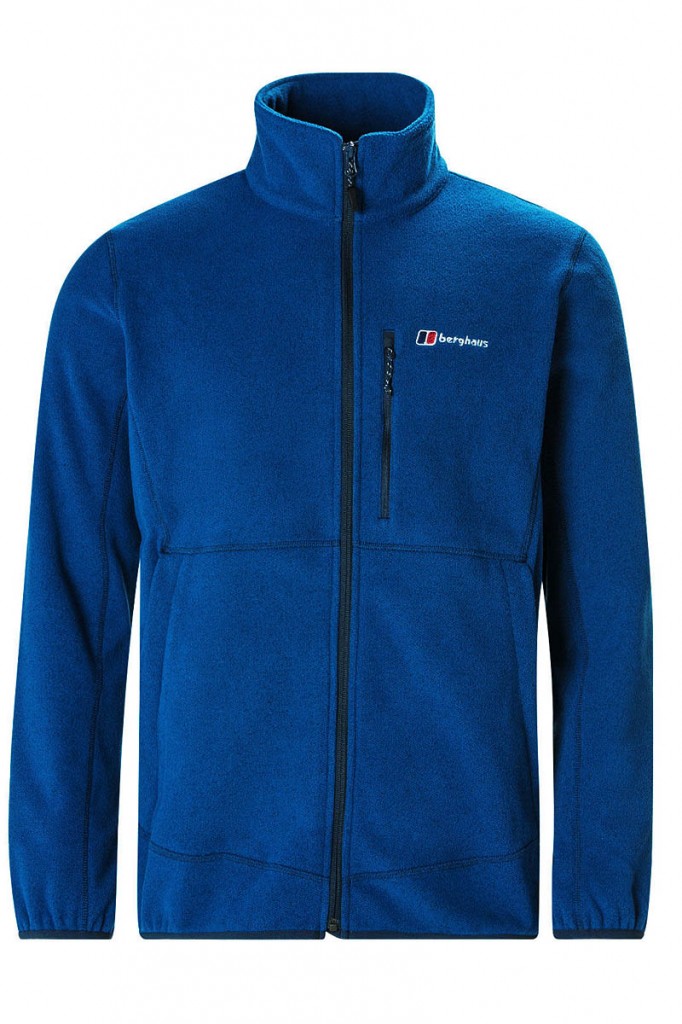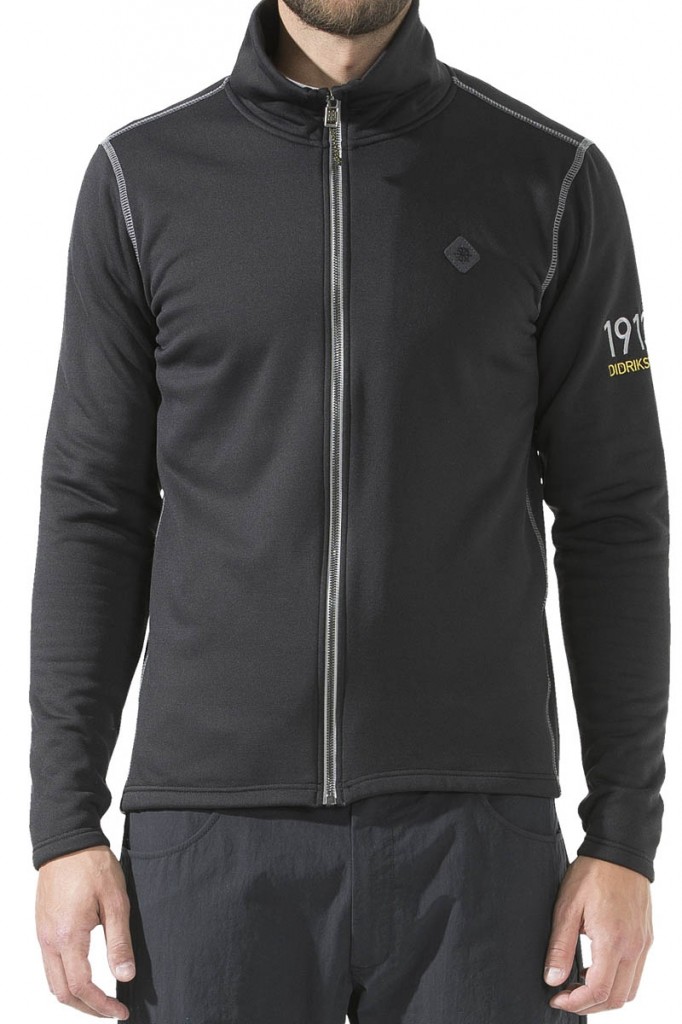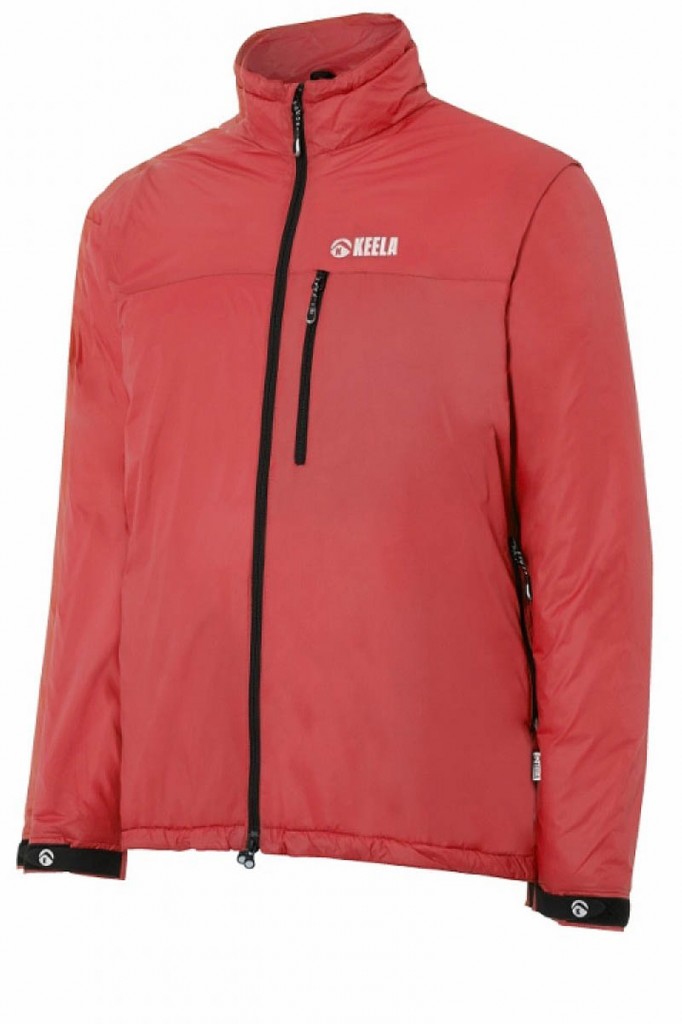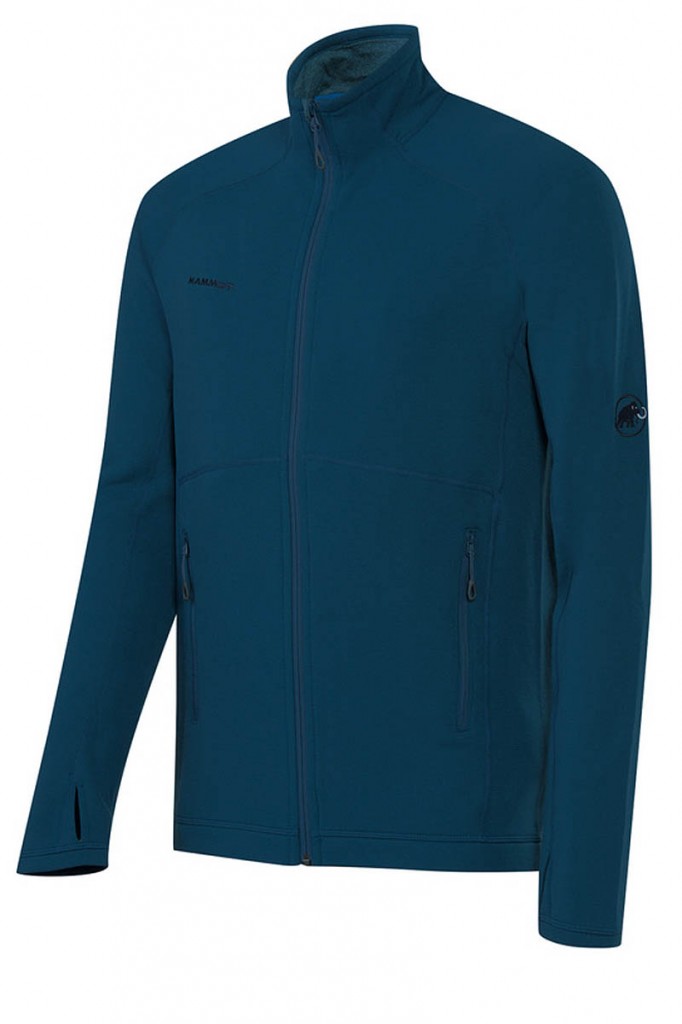A good midlayer is a versatile addition to the outdoor enthusiast’s kit.
On cool or windy days, it should provide enough warmth to be used as the outer layer with just a baselayer beneath, particularly when on the move when the user is likely to generate a bit of their own heat.
On cold days, it forms an important part of the layering system, between the baselayer and a waterproof and windproof shell.
We looked at how warm the tops in the test kept us; how well they barred the wind; how well they wicked away moisture, and how comfortable they felt overall.
They were tested in a variety of conditions, from cool and windy to sub-zero; damp and dry. We also used them both under a shell and as an outer layer.
Berghaus Fortrose 2.0 Jacket
Price: £75
Colour: blue
Weight: 444g
Material: polyester
Country of manufacture: Indonesia
Recommended wash: 30C
Sizes: S-XXL
Women’s version: no
At first glance the Fortrose 2.0 appears to be a fairly standard fleece, but there’s a little more to the Berghaus jacket than that.
The inner face of the fabric looks fleecy, and provides good warmth. The outer face is a nice looking knitted material which gives the jacket a good look. It’s smart enough to wear around town as well as on the hill.
The two shoulder panels and collar are elasticated, which allows for freer movement.
The full-length zip is backed by a baffle to help keep out the wind, and the collar is high, and tucks up just below the chin, all of which helps keep the wearer warm. Overall warmth was good, and the Fortrose 2.0 blocked the wind reasonably well, though there was some penetration in strong winds. Wicking was reasonable, but we did manage to create some perspiration build-up when working hard uphill.
The Berghaus jacket has two zipped mesh-lined hip pockets and a smaller zipped chest pocket, which will accommodate a smartphone or similar-sized gadget.
The sleeve cuffs and jacket hem both have elasticated binding which helps keep out the breeze.
The price of the Berghaus fleece is competitive too.
Warmth: 23/30
Windblocking: 15/20
Comfort: 16/20
Wicking: 6/10
Quality 7/10
Value for money 8/10
Total score: 75/100
Didriksons Evoc USX Jacket
Price: £100
Colour: black
Weight: 338g
Material: 54 per cent polyester; 39 per cent polyamide; 7 per cent Elastane
Country of manufacture: China
Recommended wash: 40C
Sizes: S-XXXL
Women’s version: no
The Evoc USX is a stretchy, softshell-type jacket that was very comfortable in use.
The material has lots of flexibility, so doesn’t ride up when reaching up, and hugs the body well, helping keep things snug.
The design is clean, to the extent of having no pockets or other frills, so if you’re looking for lots of storage in your midlayer, this won’t fit the bill.
The collar is high, coming to just below the chin, and the soft stretch fabric makes it very comfortable.
The sleeve cuffs have thumb loops to help keep your hands a bit warmer.
The Didriksons jacket kept the wind out well, and was fairly warm. It wicked moisture nicely too.
We found the Evoc USX Jacket worked well as an outer garment on cool days, and on colder trips performed well as a midlayer.
Warmth: 22/30
Windblocking: 16/20
Comfort: 17/20
Wicking: 8/10
Quality 8/10
Value for money 6/10
Total score: 77/100
Keela Sherpa Convertible Jacket
Price: £109.95 (optional hood £31.95)
Colour: red
Weight: 566g (plus 158g for optional hood)
Material: shell, 100 per cent nylon; insulation 100 per cent polyester
Country of manufacture: not stated
Recommended wash: 40C non-biological
Sizes: XS-3XL
Women’s version: yes
The Sherpa jacket from Keela is a versatile garment that is at home either as a midlayer on cold days or an outer layer when it’s not quite so cool.
It has a Flylite ripstop nylon shell which will resist a shower, and features PrimaLoft Gold insulation. This makes it one of the warmest in the test.
The Keela jacket has detachable sleeves, which when zipped off turn the Sherpa into a gilet. We found this useful when moving hard uphill when the jacket was a little too warm. Taking off the sleeves provided extra cooling, though they are a bit fiddly to unzip and we had to take the jacket off to achieve this.
Removing the sleeves also provides a bit more mobility for the arms when tackling scrambles.
Keela also provided the optional hood, which has a press-stud loop that attaches it to the rear hanging loop of the jacket. The hood is made from the same material and also has the PrimaLoft insulation, making it very warm.
The Sherpa Jacket’s full-length main zip has double pullers and is backed by a baffle to keep out the wind. There are two zipped hip pockets and a smaller zipped chest pocket. The collar covers the neck well, and it has a drawcord with a spring toggle at the back to cinch it in further if needed.
The jacket’s hem also has a drawcord to help keep out updraughts.
The sleeves have hook-and-loop adjusters.
The Keela Sherpa Convertible Jacket performed well on cold days. On cool days when on the move uphill, it was a little too warm, but removing the sleeves helped.
Windblocking was very good.
The hood, available at extra cost, attaches to the jacket by just one press-stud loop which means it has a tendency to flap about if you put it down. Better to remove it completely if not required and put it in the supplied stuffsack, which has a roll-top closure. The hood has a press-stud fastening at the front, with hook and loop strips to enable it to be closed to keep out the weather. There are also front drawcords and a rear halo adjuster, so it’s a fully-featured item that can also be used with other jackets, as it essentially sits on the head and its lower hem covers any collar.
The Keela jacket was by far the warmest in the test, thanks to its PrimaLoft insulation, which also kept the wind out completely. There was a fair build-up of moisture inside the jacket when moving fast and its slight bulkiness make it a little less comfortable than some of the thinner midlayers.
Keela’s forte is offering good value for money and the Sherpa Jacket has plenty of features at a competitive price. It works best on cold days when the insulation will keep you warm. On the move on less cool days, you may find it a little too warm, though removing the sleeves helps, we found.
Warmth: 26/30
Windblocking: 18/20
Comfort: 13/20
Wicking: 6/10
Quality 7/10
Value for money 8/10
Total score: 78/100
Mammut Trovat Pro ML Jacket
Price: £140
Colour: blue
Weight: 390g
Material: 45 per cent polyamide; 40 per cent wool; 15 per cent Elastane
Country of manufacture: Vietnam
Recommended wash: 30C
Sizes: men’s S-XXL; women’s XS-XL
Women’s version: yes, Kira Pro ML
The Trovat Pro ML jacket has a clean design in stretchy material with a high wool content.
The Polartec Power Wool fabric provides good warmth without bulk. Weight is middling, and the Mammut jacket blocked the wind quite well.
The simple design has a full-length main zip, which docks neatly at the neck, which is a good height, coming to just below the chin.
There are two zipped hip pockets with close mesh liners. The sleeves have thumb loops to help keep the hands warm when the temperature drops.
The inner face of the fabric, which is made from the Polartec Power Wool looks quite like conventional fleece, and wicked the moisture away from the body well. The outer synthetic face is a tighter knit. Seams are flatlock stitched and the whole garment is nice and stretchy, which gave good comfort and kept the Trovat Pro ML close to the body, keeping out draughts.
Reaching up for holds on scrambly routes proved no problem, with no riding up of the Mammut jacket.
Quality was good though the Mammut jacket is pricey.
We liked how the Trovat Pro ML performed both under a waterproof shell and on cool days as the outer layer, when it provided just about the right amount of warmth.
Warmth: 23/30
Windblocking: 15/20
Comfort: 17/20
Wicking: 7/10
Quality 7/10
Value for money 7/10
Total score: 76/100
Páramo Bentu Fleece
Price: £125
Colour: blue
Weight: 404g
Material: polyester
Country of manufacture: Colombia
Recommended wash: 30C in Nikwax Tech Wash
Sizes: men’s S-XXL; women’s XS-XL
Women’s version: similar, Zefira Fleece
The Bentu Fleece is made from thinner material than many other midlayers in the test, but its dense fabric blocked the wind well and was fairly warm.
There’s a slight stretch in the fabric which helps ease of movement and also keeps the Páramo top hugging the body well. The full-length main zip has a double puller and is backed by a broad baffle to keep the wind out.
The collar sits under the chin and fits well round the neck. There are two zipped hip pockets for keeping hands warm and the Bentu Fleece also has a zipped chest pocket, again with mesh liner. This is fairly generously sized and we just managed to fit our laminated OS map in it.
The sleeve cuffs are plain – there is no adjustment and no thumb loops, but they can be pushed up the arm for cooling when things warm up.
Used on its own, the Páramo fleece was of medium warmth, ideal for a cool day when you’re on the move. On one of our test days there was persistent wind-blown drizzle and the Bentu resisted this well, keeping us dry, useful if you don’t want to be putting on waterproofs and taking them off in showery conditions.
For more protection against rain, Páramo says the Bentu Fleece can be combined with a Bentu Windproof, or any other of the brand’s directional waterproof jackets.
Wicking was among the best in the test, which helped keep us dry when working hard uphill.
The marl-effect fleece in the Bentu is, despite being fairly thin, good at keeping out the wind and, combined with its very good wicking properties, makes it a good choice for wearing as an outer layer over just a baselayer on cool days. For colder and wetter conditions, the Páramo fleece worked well under a shell, whether one of the brand’s own directional jackets or a more conventional waterproof.
Páramo aficionados will appreciate the brand’s distinct styling of the midlayer.
The Bentu Fleece can be treated using Nikwax’s chemicals to enhance water repellency.
Green credentials of the Páramo Bentu fleece are good, with the garment free from fluorocarbon treatment. It is produced in the company’s partner the Miquelina Foundation in Colombia.
Warmth: 22/30
Windblocking: 16/20
Comfort: 15/20
Wicking: 8/10
Quality 8/10
Value for money 6/10
Total score: 75/100
Rab Paradox Pull-On
Price: £115
Colour: grey
Weight: 348g
Material: 100 per cent polyester
Country of manufacture: China
Recommended wash: 30C
Sizes: men’s S-XXL; women’s 8-16
Women’s version: Paradox Jacket £120
This Rab midlayer uses Polartec’s Alpha insulation, a thin but effective new material that is designed to reduce the need for venting layers or removing them when activity increases.
It’s a pull-on design, with the zip extending down to the lower chest area. The quilting stitching has a hexagonal pattern in most areas, which gives the Paradox a distinctive look.
The Rab midlayer is among the lightest in the test, yet offered very good warmth, thanks to the Polartec Alpha material. It’s also lacking in bulk, meaning it packs down well in the rucksack when not being used.
The fit is fairly snug, keeping the Paradox close the body. Windblocking was good, and the Rab top wicked moisture away very well, both when used as the outer layer and when worn under a waterproof shell.
It has a simple design, with no pockets. The sleeves have elasticated cuffs and the neck of the midlayer sits just below the chin when the zip is fully closed. The fabric of the Paradox Pull-On has a slight stretch and didn’t ride up when we were reaching up for holds. The hem has a single-puller drawcord, which cinches the top in at the back of the garment to help keep draughts out.
The thin Polartec Alpha insulation provides a surprising amount of warmth for its depth, and the soft material and lightweight mesh lining make this a comfortable midlayer.
Warmth: 25/30
Windblocking: 15/20
Comfort: 18/20
Wicking: 8/10
Quality 7/10
Value for money 7/10
Total score: 80/100
Sprayway Wodan Hoody
Price: £65
Colour: dark blue
Weight: 406g
Material: 100 per cent polyester
Country of manufacture: China
Recommended wash: 30C
Sizes: S-XXL
Women’s version: no
The Wodan is a nicely styled fleece hoody from Sprayway.
It uses a mixture of marl and plain panels in an asymmetric design. The shell is jersey faced with the fleece finish on the inside, and the jacket is very stretchy, though the fit was fairly generous. The jacket did ride up a little when reaching up for holds.
The full-length zip is backed by a baffle to help keep the draughts out and the neck rises high, enabling it to be pulled up over the mouth when a cold headwind is encountered. The hood worked well and can be adjusted using shockcords with spring toggles, though when cinched in hard, this did leave a fairly large loop of cord exposed near the face. When pulled in tight, the hood turned with the head.
The Sprayway jacket has two zipped handwarmer pockets, the right-hand one of which has a cord outlet for earphones lead.
The Wodan Hoody provided good warmth and the jacket’s windblocking was also fairly good. It wicked moisture very well and, on a day with persistent light drizzle, kept most of the damp out.
It offers very good value for money – it’ll make the smallest dent in your bank account of any of the garments in the test. The Sprayway Wodan is stylish enough for it to be used as an everyday urban top while providing enough technical protection for use as part of a layering system on the hill.
Warmth: 21/30
Windblocking: 13/20
Comfort: 15/20
Wicking: 8/10
Quality 6/10
Value for money 9/10
Total score: 72/100
We were impressed by the performance of the overall winner, the Rab Paradox Pull-On, which provided good warmth for a top with very little bulk or weight. The Polartec Alpha Insulation worked very well at keeping our body temperature at a comfortable level, whether on the move or during halts and helped it gain our best in test award.
The Keela Sherpa Convertible Jacket was the warmest in the test, thanks to its PrimaLoft insulation, though it is bulkier. It provides good value for money, though the optional hood adds to the cost.
For those on a tight budget, the Sprayway Wodan is a good bet, along with the Berghaus Bentu, which probably came closest to a traditional fleece midlayer.
Páramo’s Bentu is the least bulky and will repel quite a shower and can be retreated to add water repellency, while both the Didriksons Evoc USX and Mammut Trovat Pro are stylish jackets that won’t look out of place on the town or on the hill.
- All the samples for the test were provided by the brands.
